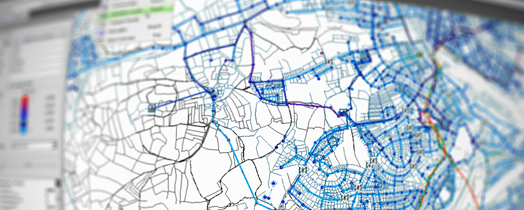It is not easy to typify the complex control and regulation of water management processes, plants and treatment methods. Tasks to be solved range from the model-supported water management of transregional storage systems and widely spread water supply nets to controlling the growth of biocoenosis in modern wastewater plants. They include the extremely non-linear controlling of chemical titration methods and the robust inflow and outflow regulations for decentralized water supply and wastewater treatment plants.
The Alliance designs parameters to meet each customer’s individual requirements. First, all available technical data is monitored closely which forms the basis for optimizing systems and defining specific goals. The Alliance’s aim is to find the most efficient and sustainable methods for managing not only water as a raw material but also the energy needed to supply this valuable resource.
Intelligent IT solutions provide practical solutions for improving the supply of water to all users. These integrate all the information available on these highly complex systems in e.g. simulation models and help decision-makers find sound solutions for planning infrastructure, optimizing water supply and energy consumption, and managing extremes cases such as drought or flooding.
Calculating scenarios helps experts to estimate the consequences of factors such as climate change, altered land use, economic aspects and population growth, and tests the efficiency of potential measures.
Comprehensive basic know-how is essential – not only for managing water supply and wastewater treatment systems but also for planning new systems and extending canals, sewer systems, reservoirs, water treatment plants, supply networks and wastewater treatment plants. The Fraunhofer Water Systems Alliance offers its customers a comprehensive range of products for modeling all systems belonging to the water cycle beginning with catchment areas right through to wastewater treatment plants. These models focus especially on the requirements for automation and are designed to meet the particular needs of decision-makers. This makes it possible to solve such complex problems as e.g.
- optimal water distribution and supply integrating all available sources of water (surface water, groundwater, treated wastewater),
- optimized multicriteria control of reservoirs (water supply, flood prevention) and
- finding and minimizing leackages in water networks.
 Fraunhofer Water Systems Alliance (SysWasser)
Fraunhofer Water Systems Alliance (SysWasser)